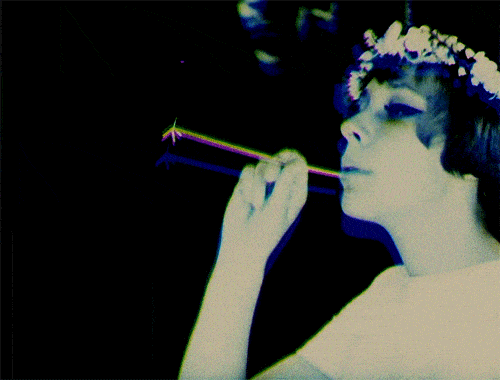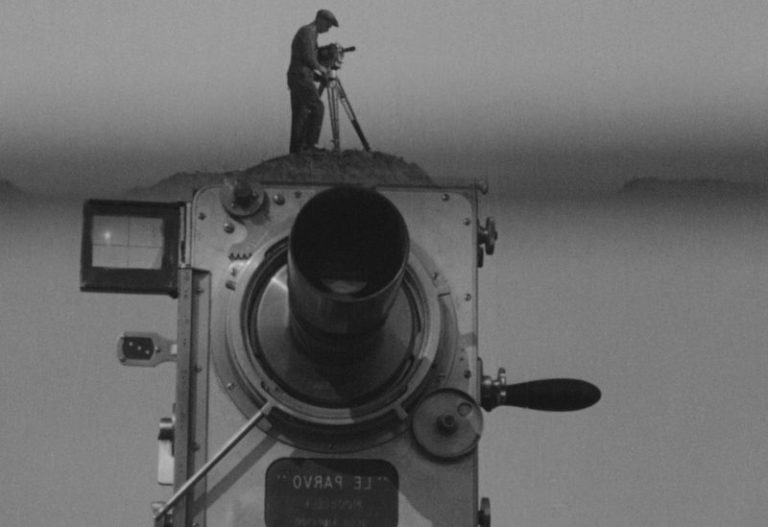czechoslovak new wave
est. 1962 – 1970
In the mid-20th century, a cinematic revolution was brewing in Czechoslovakia. The Czechoslovak New Wave, a film movement characterized by visual experimentation and innovation in storytelling, left an indelible mark on the world cinema. Unfolding during a time of political and social upheaval, it greatly influenced the European arthouse cinema.
Published by: CinemaWaves Team | Filed Under: Film Movements
Origins of
the Czechoslovak New Wave
After the Communist Party took control of the country in 1948, the cultural and artistic spheres were heavily controlled by the state. This era severely stifled artistic expression, leading to a state-controlled cinema that was dominated by propaganda.
Films produced during this time largely served as tools for ideological indoctrination, adhering strictly to the tenets of socialist realism and leaving little room for creative freedom. However, by the late 1950s, the political climate in Czechoslovakia began to change, as a period of de-Stalinization across the Eastern Bloc created a more liberal environment for artists.
The movement’s development was closely tied to the liberalization of Czechoslovak society in the 1960s, particularly under the leadership of Alexander Dubcek and the Prague Spring of 1968. Filmmakers found themselves able to explore themes of individualism, absurdity, and social criticism in ways that had previously been off-limits. They were influenced by Italian Neorealism and the French New Wave, but their films were deeply rooted in the unique political and social realities of Czechoslovakia.
The Czechoslovak New Wave peaked in the mid-1960s but came to a sudden halt with the Soviet-led invasion of Czechoslovakia in 1968, which marked the end of the Prague Spring. The political repression that followed resulted in tighter censorship and many filmmakers being silenced or forced into exile.

Czechoslovak
New Wave Characteristics
The Czechoslovak New Wave is characterized by its use of dark humor, absurdity, and satires. Many of the films focus on everyday life, exposing the contradictions within the socialist system. Filmmakers used irony and subversion to bypass censorship, while presenting their critiques in a humorous or surreal manner.
Another hallmark of the movement is its focus on non-professional actors and naturalistic settings. This realism was paired with a rejection of conventional narrative structures, as directors experimented with fragmented storytelling, jump cuts, and a mix of documentary and fiction styles.
One of the defining characteristics of the Czechoslovak New Wave was its stunning cinematography. The movement produced visually captivating films, with a keen focus on the aesthetics of each frame. Cinematographers like Jaroslav Kucera played a significant role in shaping their distinctive look.
Lastly, the movement focused on themes of individualism and personal freedom. Many films depicted characters trapped in mundane, bureaucratic systems, struggling to assert their own identity or autonomy.
This focus on personal experience and inner conflict was a subtle critique of the collective ideals promoted by the socialist state. The combination of personal stories, absurd humor, and social critique made the Czechoslovak New Wave distinctive and influential in the broader landscape of international cinema.


Famous Czechoslovak New Wave Films and Directors
Milos Forman, renowned for his early films “Loves of a Blonde” (1965) and “The Firemen’s Ball” (1967), offered a satirical perspective on the absurdities of everyday life under an oppressive regime. His ability to blend humor with social critique made his films both entertaining and thought-provoking. Forman’s work during this period laid the foundation for his later success in Hollywood, where he continued to explore themes of individuality and authority.
Jiri Menzel‘s “Closely Watched Trains” (1966) stands as one of the most celebrated films of the Czechoslovak New Wave. Winning the Academy Award for Best Foreign Language Film in 1968, it blends humor and melancholy to depict the life of a young train station employee during World War II.
Last but not least, Vera Chytilova with her feminist masterpiece “Daisies” (1966) defied conventional narrative structures while pushing the boundaries of visual aesthetics. The film follows two young women who embark on a series of anarchic and surreal adventures, challenging traditional gender roles and societal norms. Chytilova’s unique use of color, montage, and non-linear storytelling set “Daisies” apart as a pioneering work of avant-garde cinema.
Legacy and Influence
The Czechoslovak New Wave emerged from a complex historical and political backdrop and at the uncertain times, influencing subsequent movements from the Central and Eastern Europe. Its fearless exploration of society, innovative storytelling techniques, and the noticeable impact on global cinema make it a movement worthy of recognition and celebration.
Though the Prague Spring was quashed, the spirit of creativity and freedom that fueled the Czechoslovak New Wave lives on in the hearts of filmmakers and cinephiles alike. This movement’s legacy serves as a powerful reminder of the resilience of artistic expression and its ability to challenge oppressive regimes.
Refer to the Listed Films for the recommended works associated with the movement. Also, check out the rest of the Film Movements on our website.
Jan Svankmajer is a Czech filmmaker known for his surreal animations which use a wide variety of techniques ranging from claymation to puppetry to paper cutouts. He…
Also referred to as the Polish New Wave, is an influential film movement that originated in the post-World War II era. It stands as a beacon of creativity and intellectual…
Or La Nouvelle Vague, is one of the most iconic and influential film movements in the history of cinema. Emerging in the late 1950s and flourishing throughout the 1960s…
Experimental film, referred to as avantgarde cinema, is a genre that defies traditional storytelling and filmmaking techniques. It explores the boundaries of the medium…
Auteur theory is a critical framework in film studies that views the director as the primary creative force behind a film, often likened to an “author” of a book. This theory suggests…
In the early 20th century, a cinematic revolution was brewing in the Soviet Union. A group of visionary filmmakers, collectively known as the Soviet Montage School, gathered…






